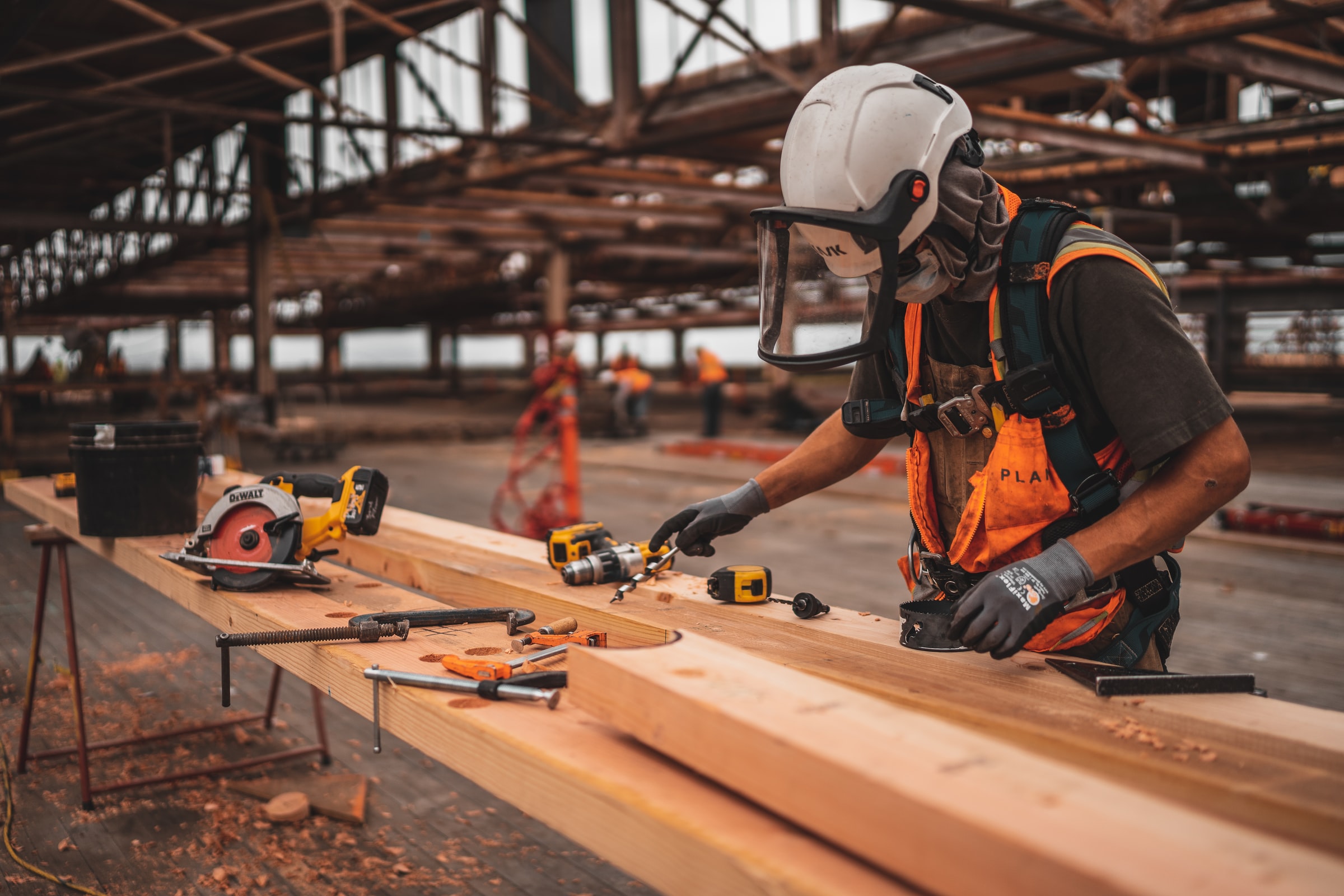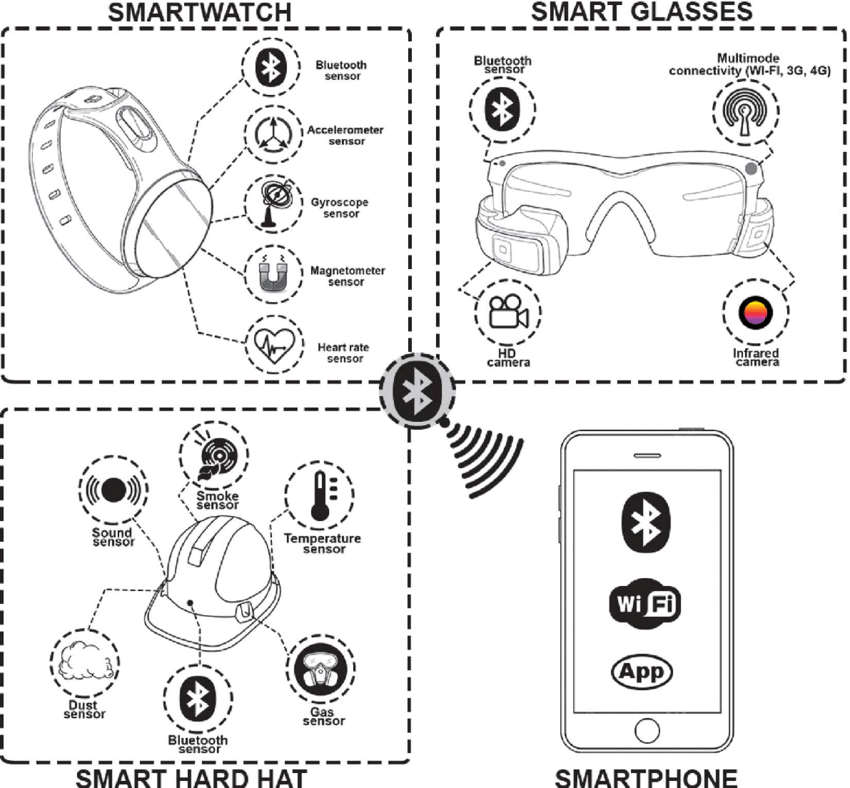Understanding Safety: What is smart PPE?

ANDY TILLEARD
EHS Consultant
EazySAFE
PPE (personal protective equipment) has long been recognised as a useful tool in providing a barrier between a person and a hazard. We are all familiar with high visibility vests, hard hats and safety footwear which are probably the most common items of PPE used throughout the industry on a daily basis. Covid-19 has also raised our awareness of both PPE and RPE (respiratory protective equipment) in terms of face masks and protective gloves to prevent or at least minimise contact with the virus so we know how protective they can be.

Smart PPE is a logical development for certain types of personal protective wear where technology has been incorporated into PPE to capture and monitor hazardous environmental data or the positional information of the wearer, usually in higher-risk work environments. It incorporates sensors or other technologies to provide data on the individual and the work environment they are in, normally using discrete BLE (Bluetooth Low Energy), RFID (Radio Frequency Identification) or other communications or tracking technologies.
This use of digital technology is now commonly known as Industry 4.0 or the Fourth Industrial Revolution (4IR) which is the development of digital tools and technologies in the workplace – smart PPE is a natural evolution of this. The Fourth Industrial Revolution is the natural successor to previous industrial revolutions where transformative technologies were introduced:
- The development and use of the steam engine;
- The development of the manufacturing assembly line;
- Computer technology and the Internet;
- Digital integration using smart technologies.
It is important to note that PPE is still the control of last resort for an individual – the management of risk factors in any work environment must still be considered as per the risk assessment process, the hierarchy of control protocol and the general principles of prevention.
The legal framework
Personal and respiratory protective equipment are covered by the PPE regulations in Chapter 3, Part 2 – Personal Protective Equipment within the Safety, Health and Welfare at Work (General Application) Regulations, 2007 (as amended). Employers have an obligation to assess and provide RPE and PPE that protect workers against the identified and assessed hazards present.
There is no explicit reference at the moment to wearable or smart PPE in safety legislation although the line between safety and data privacy (for example, as covered in GDPR 1) because of the gathering of certain types of personal data will almost certainly become an issue that will need to be addressed in the future.
Using smart PPE
We as a population are becoming increasingly familiar and comfortable with wearable technologies such as smart watches that monitor fitness levels, can track our location and provide summary information on our fitness goals, so the integration of these and other monitoring technologies is becoming normalised. There is no doubt that there are hazardous working environments where integrated technology within PPE can provide valuable feedback to an individual’s health that is currently difficult to track and monitor away from the worker.

The use of smart PPE can include:
- monitoring movement (or lack of movement for lone workers);
- monitoring working environments for physical agents, chemical and gas levels and other potential negative physiological human impacts depending on the sensors used;
- monitoring temperatures in extreme heat and cold environments – heat stress as an occupational health risk is well understood so it is easy to monitor the effectiveness of smart PPE to prevent this condition and to trigger preventative actions before the condition escalates;
- track the position and condition of workers in an emergency;
- RFID can be used as a stock-taking tool and automatically track PPE use by item and the person using it;
- monitor the actual use of required PPE in a work environment.
For example, PPE products are already available for heat stress monitoring: recording skin, activity, heart rate and ambient temperatures data which is sent to the cloud for monitoring – phone apps or inbuilt devices such as vibration alarms can warn workers and supervisors of rising risk factors and prompt preventative actions.
The system sends multi-level alerts to workers through device vibration, iOS or Android app notification, and to supervisors through the web dashboard, indicating that the worker should take a break and allow the body temperature to return to normal levels. 2
An American company called Guardhat 3 produce an ANSI.Z89.14 Type I Class-G industrial hardhat which has location tracking, voice communications, proximity alarms, presence tracking for monitoring movement and Bluetooth and RFID inventory tracking.
Smart PPE issues to consider
Whilst the benefits of using smart PPE in certain hazardous and emergency scenarios is obvious, these technologies move us closer towards a clash between protecting a working from a workplace hazard and using data to track an individual in the workplace and gathering personal physical data about them.
Whilst BLE and RFID are simple and effective technologies, there are potential issues:
- smart PPE can still be susceptible to wear and tear and deliberate damage;
- smart PPE requires additional sensor technology and possible cloud-storage capacity which is a cost;
- smart PPE may be more expensive to replace that non-smart PPE;
- workers may be resistant to the use of what are effectively potential tracking and monitoring technologies;
- workers need to be educated and assured that their use is appropriate to the working environmental risk;
- employers need to be clear on the collection, use and storage of personal employee information gathered by smart technologies, especially using third-party providers.
Summary
Smart PPE is a natural technological development – the interface between PPE and improving environmental hazard monitoring technologies. Their benefits are clear in the right context, but they also bring issues with data privacy and the investment required to purchase and maintain these smart technology systems and equipment. For an employer, all of the benefits and costs will need to be carefully assessed before any investment in smart Personal Protective Equipment and their associated systems is made and effectively communicated to their workforce.
References:
(1) – GDPR – General Data Protection Regulation (EU 2016/679) is an EU regulation that is captured in Irish law under the Data Protection Acts 1988-2018.
(2) – https://kenzen.com/kenzen-unveils-cloud-based-heat-monitoring-system-for-worker-safety/
(3) – https://www.guardhat.com/hc1-communicator
(4) – Vancho, A, Zoran., D. Dejan.,M. DAlibor, S. Smart PPE (2019). pp 37-36 DOI: 10.17794/rgn.2019.1.4

Discover our Safety Training Platform
Train your employees anytime, anywhere with our environmental, health, safety and wellness training platform.

TAILORED TRAINING
Discover our safety training courses and ehs onboardings, which can be customised and offered in several languages.

SAFETY MANAGEMENT
Ensure the distribution of your safety policy by training your permanent, temporary or seasonal staff.

GLOBAL MONITORING
Simplify the management of your safety policy thanks to the numerous dashboards and training reports.
